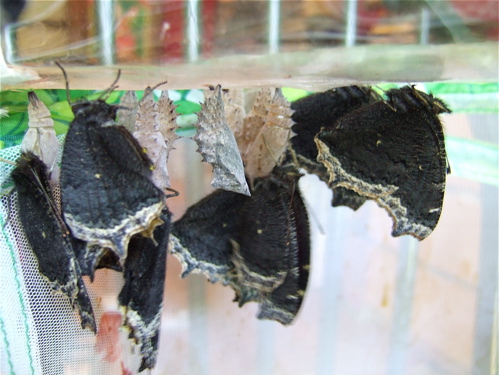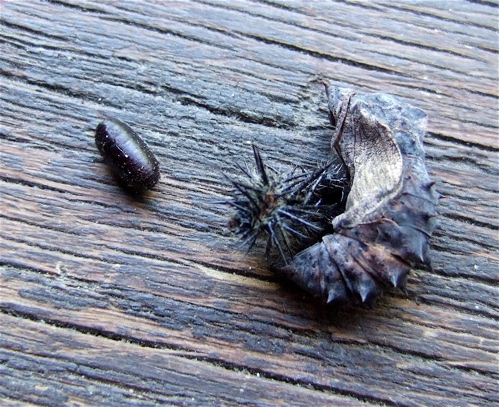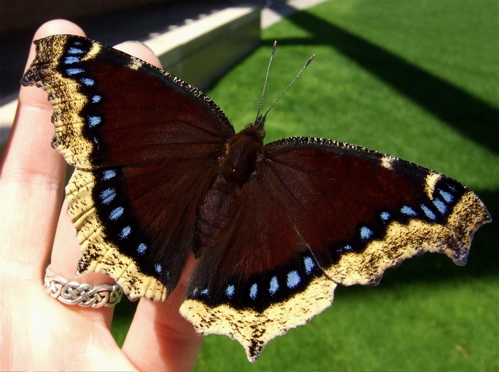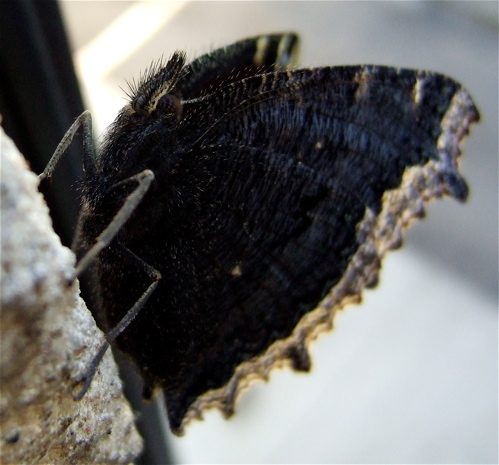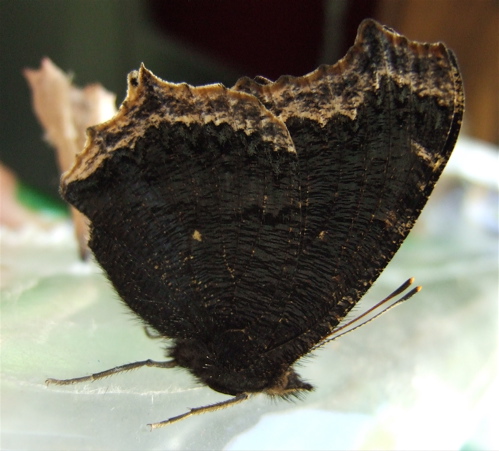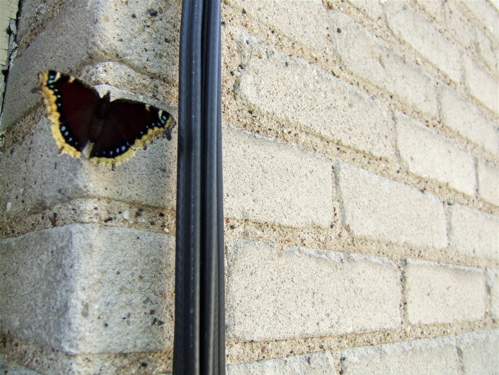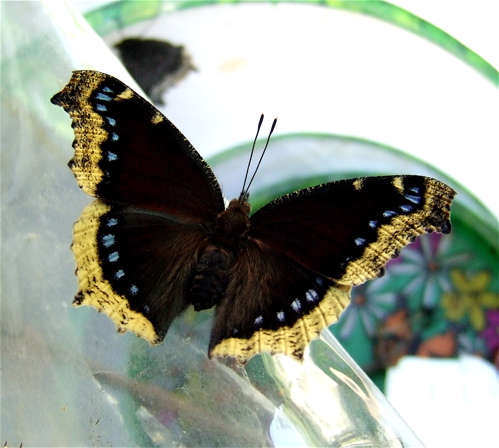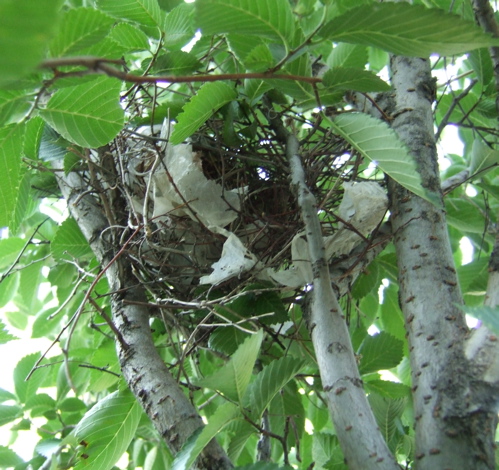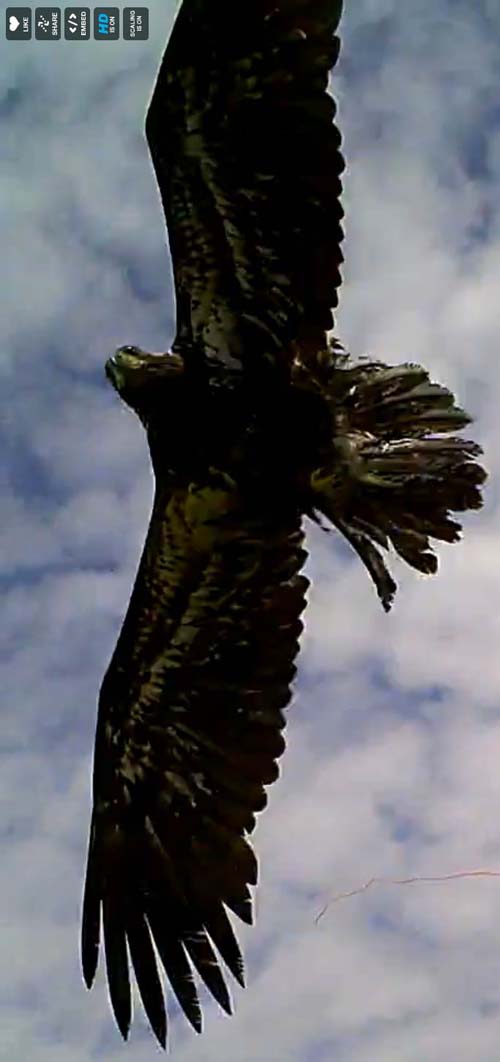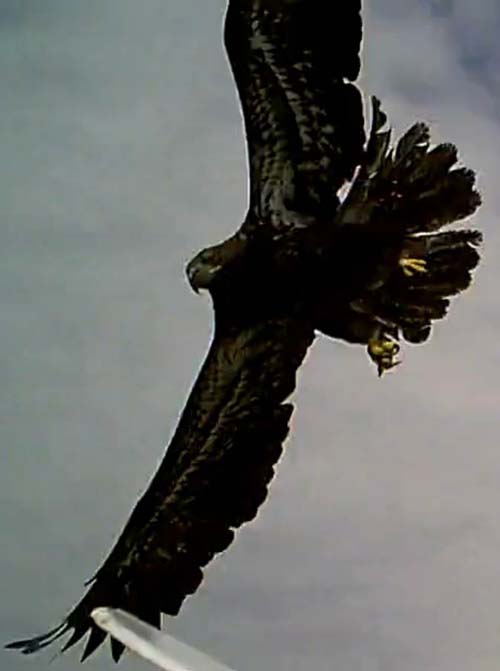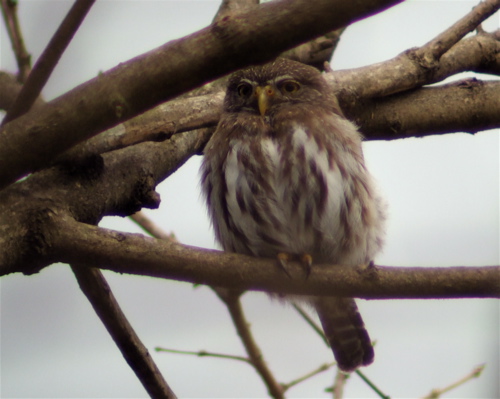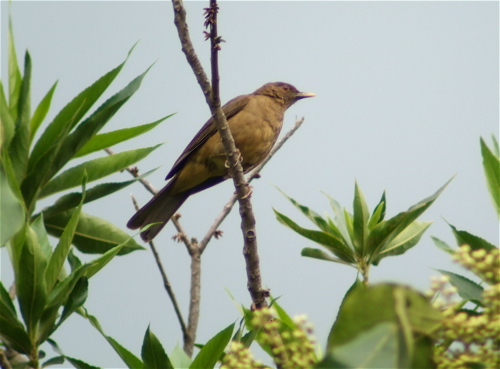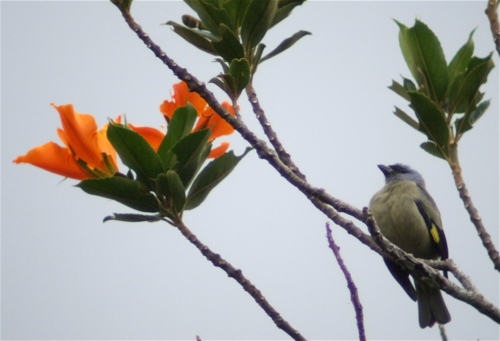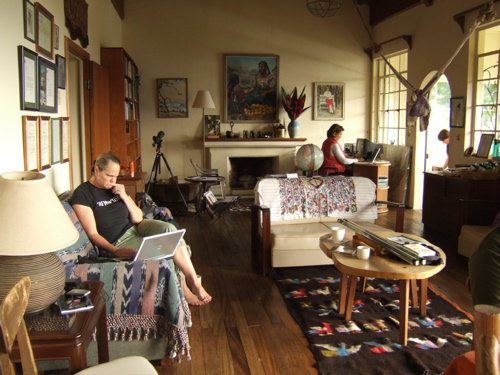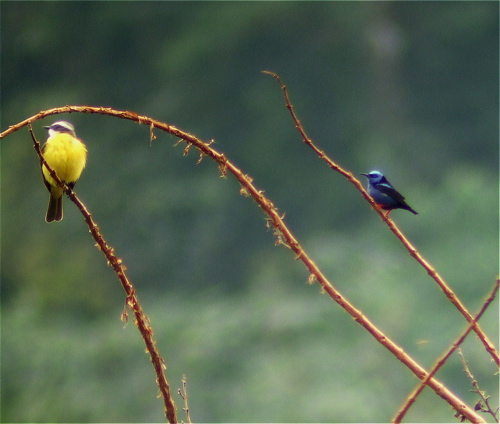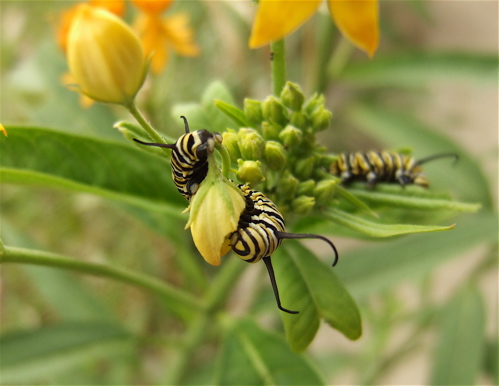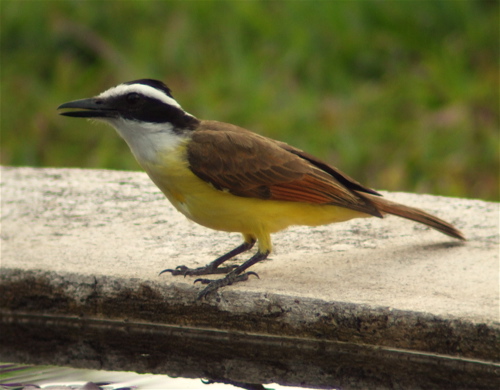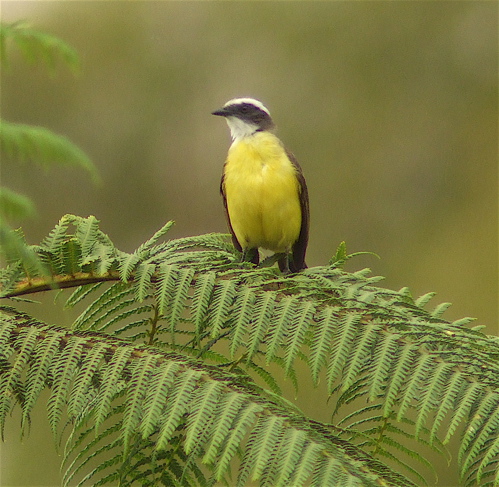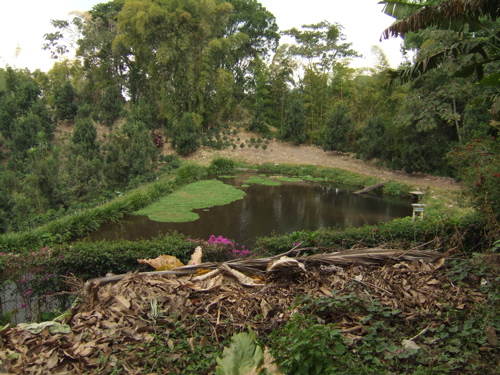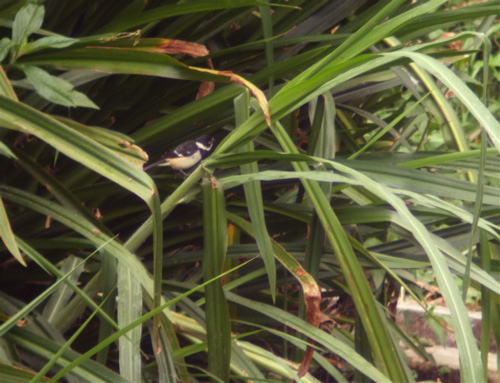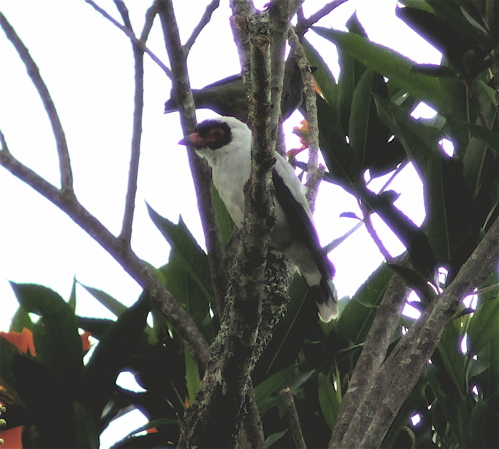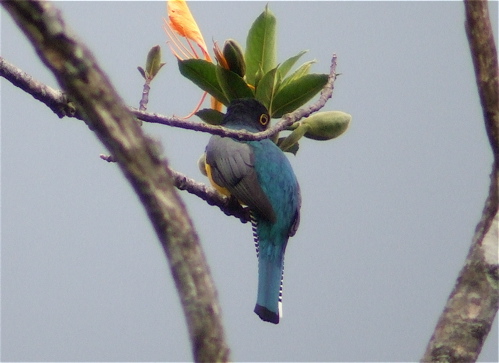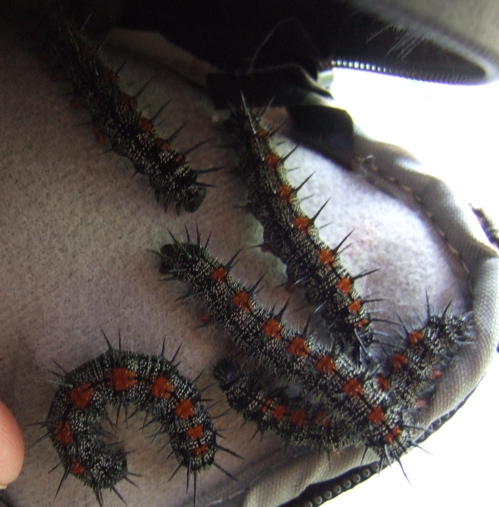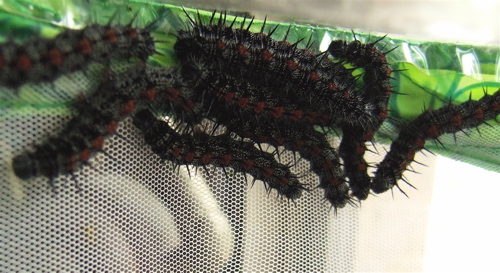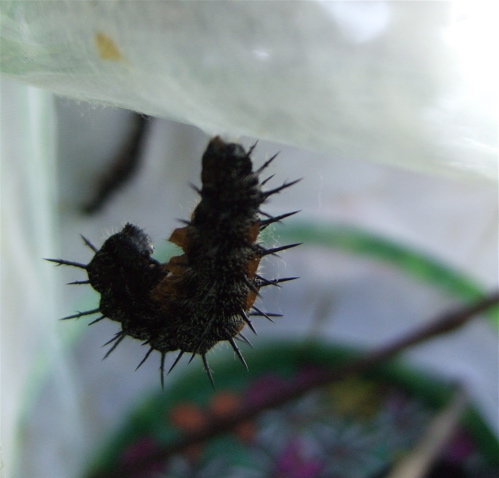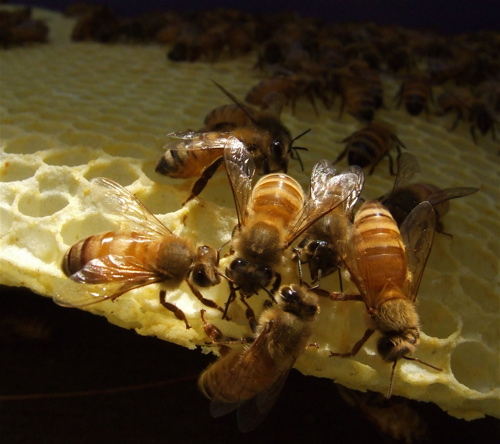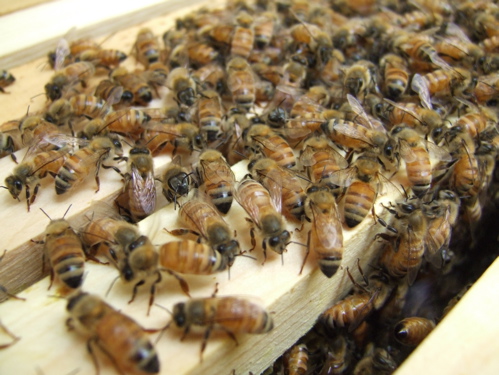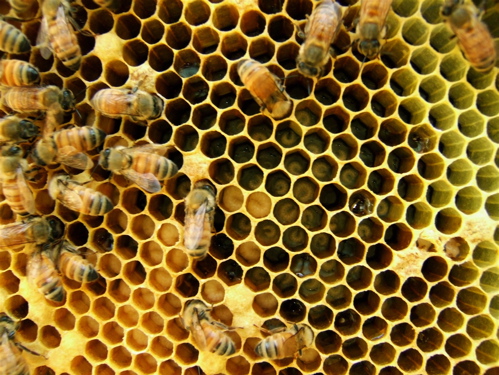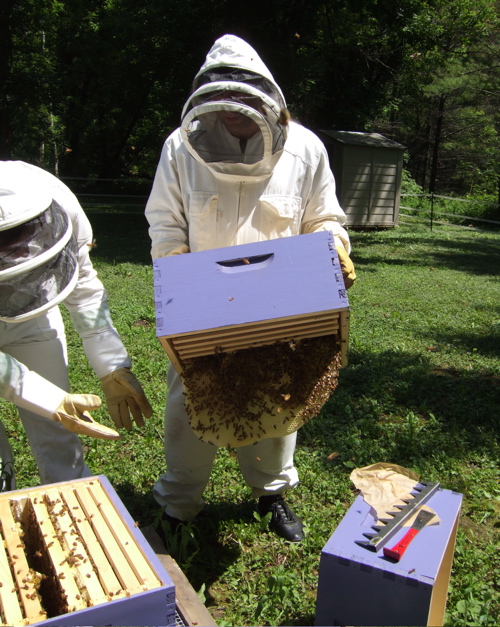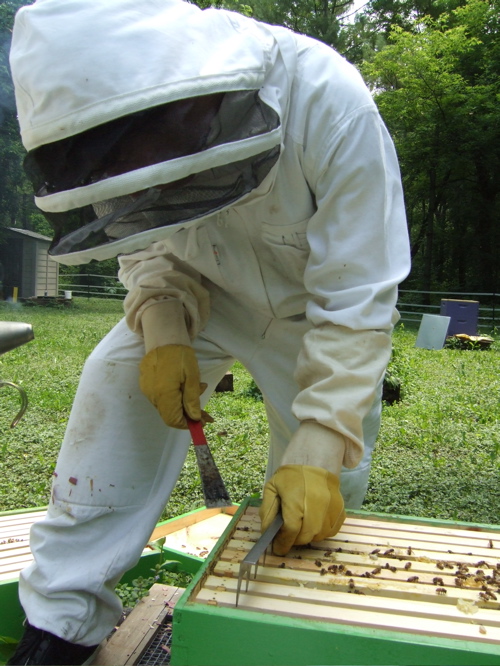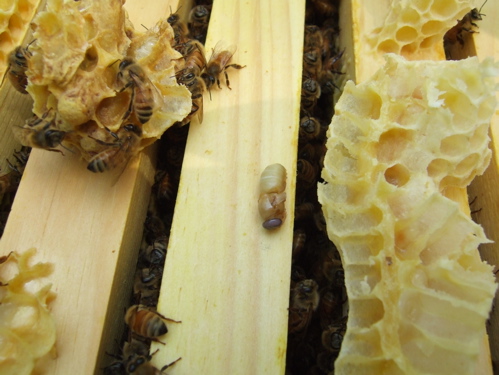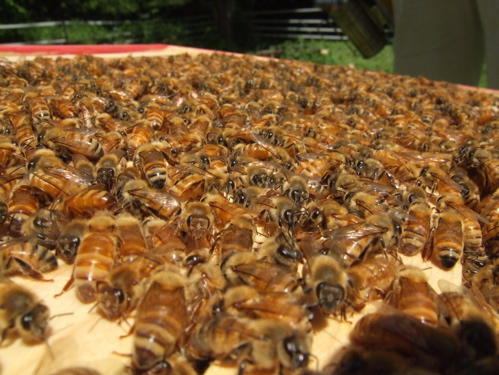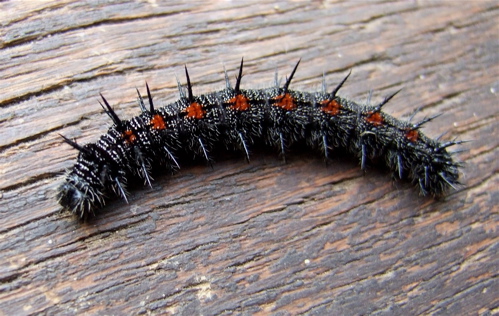 My goodness, those mourning cloak caterpillars pupated quickly!
My goodness, those mourning cloak caterpillars pupated quickly!
Less than two weeks after gathering a whole boat load of mourning cloak caterpillars on the bike trail, the all emerged at about the same time. I was engaged in a phone meeting when I looked over and saw all the activity unfolding in my butterfly ranch. I had to suppress my excitement, not every adult understands a big girly scream of delight at watching butterflies emerge.
All told, of the 13 caterpillars I picked up, 11 emerged into butterflies. One never emerged and one ended up having parasites. I noticed that particular caterpillar didn't crawl as much as the others and ended up forming it's pupae on the ground of the ranch, rather than on the ceiling like the others. I had meant to toss it, fearing that being on the ground would lead to deformation in the pupae. When I went to throw it away, I noticed the all too familiar pods of flies next to the pupae. I flushed them all.
I was most excited to get photos of the mourning cloaks that emerged--isn't that a dynamite looking butterfly? They are my favorite butterfly, but they are so flighty outside, I rarely get one in the right position to get a photo of their fabulous and subtle colors. They are still a bit groggy as they dry out, you get to spend lovely little moments with them, studying all their detail, color, and beauty they would normally hide from what they think would be a potential predator. This is another creature that makes me wish I could paint. Again, I wish I could just spend a few hours getting lost in the color and patterns on the wings, examining the fine subtle texture of the wings.
Look at that face, the intrepid face of a butterfly about to take on the world.
I had to go to work at the park service during the day and some of the mourning cloaks were still emerging and not quite dry, so I took them with me for release there. There are plenty of plants for them to nectar on around the building.
This is one of the longest lived butterflies. I was trying to read more about them on the Interent. I found at Butterflies and Moths that after they emerge they feed briefly, estivate until fall, when they re-emerge to feed and store energy for hibernation...Okay, if you are like me, you are wondering, "What the heck does estivate mean?"
Well, "to estivate" is kind of like "to hibernate," it's just so darn hot, they lay low until it cools off. Then the mournin cloaks will feed again and then hibernate through the winter, wake the following spring and start the process all over again. No wonder they can live so long--they're sleeping most of the time.
So, the butterflies are off the the world, it was cool having them pupate in my kitchen for a few days. Here's a video of some of them taking off. The pump up their wings and then off they go.
[youtube]http://www.youtube.com/watch?v=5FLz6bc9eSE[/youtube]

